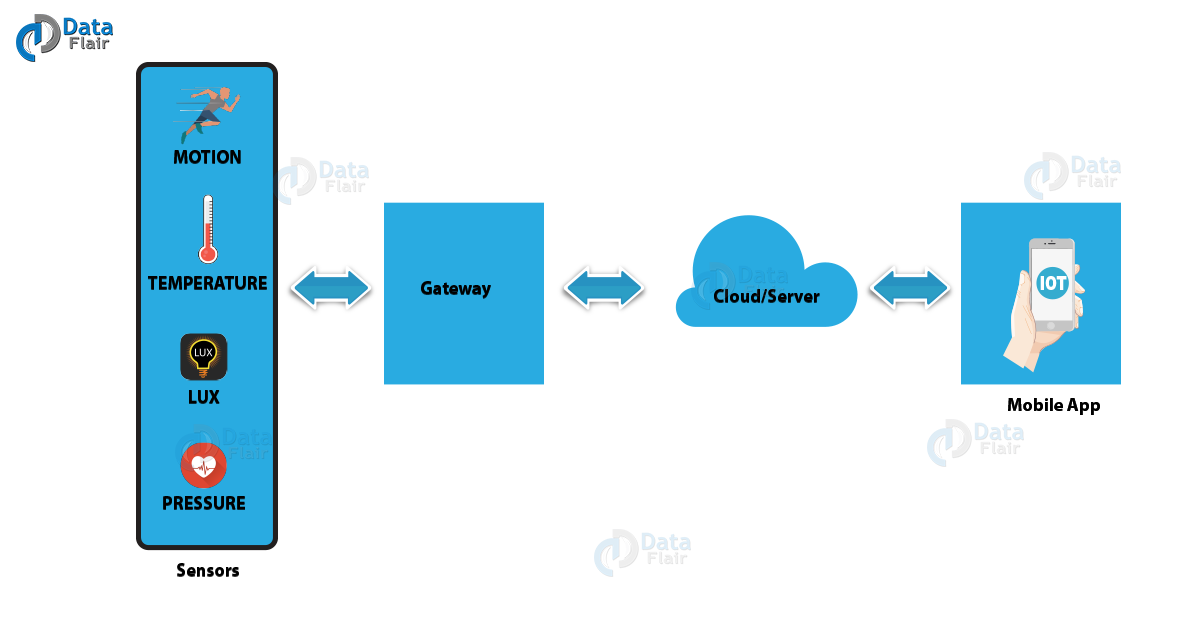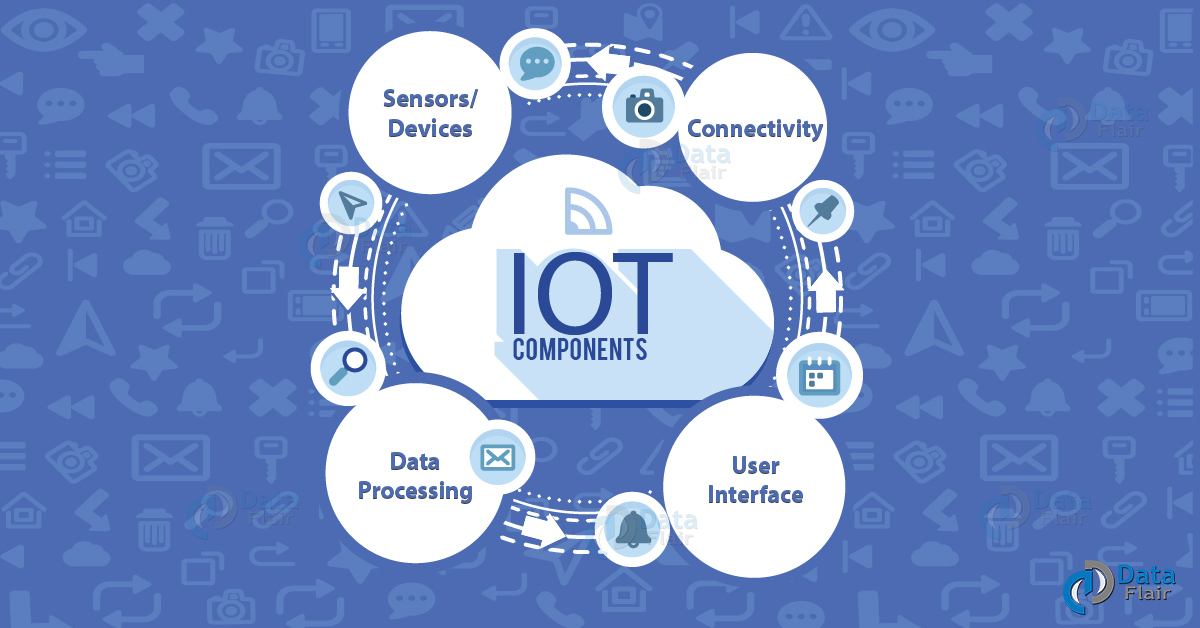4 important components of iot

Internet of Things( IoT) is the next big thing in technology that is transforming the way we live our daily lives. It is changing the way we interact with our surroundings, communicate with each other, and manage our devices. The potential of IoT is enormous, with experts predicting the growth of the IoT market to reach $1.1 trillion by 2026.
How IoT Works
The Internet of Things is based on four main components – sensors, connectivity, data processing, and user interface. The sensors are the devices that collect data from the physical world, including temperature, humidity, pressure, proximity, and light. These sensors are connected to the internet through a Wi-Fi or cellular network.

The data collected by the sensors is then sent to the cloud, where it is processed and analyzed. The data processing involves cleaning, filtering, and transforming the raw data into usable information. The processed data is then used to create insights, predictions, and recommendations.
What is Internet of Things and How is it Affecting Us?
The user interface is the way the end user interacts with the IoT system. This can be through a web-based dashboard, a mobile app, or through voice-activated assistants like Amazon’s Alexa. The user interface allows the user to control the devices, receive alerts, and view insights and recommendations.

The main benefit of IoT is the ability to collect and analyze data in real-time, providing new insights and decision-making capabilities. For example, a smart thermostat can automatically adjust the temperature based on your schedule, saving energy and money. A smart fridge can alert you when you’re running low on groceries, and automatically order more. A smart home security system can monitor your home and alert you in case of any suspicious activities.
How Does IoT Work?
In addition to these consumer applications, IoT is also transforming industries such as healthcare, manufacturing, and agriculture. For example, IoT can be used to monitor patient health remotely, optimizing manufacturing processes, and predicting crop yields.
Despite the potential of IoT, there are also concerns about privacy, security, and data ownership. With the vast amount of data being collected, the potential for misuse or exploitation is high. It is essential to establish clear guidelines and regulations to ensure that IoT is used to benefit society and not harm it.
Abstract
The Internet of Things (IoT) is a rapidly growing technology that is transforming the way we live, work, and interact with the world around us. IoT is based on four main components – sensors, connectivity, data processing, and user interface. These components work together to collect data from the physical world, process it, and provide insights that can be used to improve our lives. IoT is already revolutionizing industries such as healthcare, manufacturing, and agriculture, and has the potential to change many other areas of our lives as well.
Introduction
The Internet of Things (IoT) is a term used to describe the interconnectivity of everyday objects, devices, and machines. IoT involves a network of devices that can sense, collect, and exchange data in real-time. The data collected by IoT devices can be used to improve decision-making, optimize processes, and create new opportunities for innovation. The potential of IoT is vast, with experts predicting that the market for IoT devices will reach $1.1 trillion by 2026.
Content
The four main components of IoT are sensors, connectivity, data processing, and user interface. Sensors are devices that collect data from the physical world, including temperature, humidity, pressure, proximity, and light. These sensors are connected to the internet through a Wi-Fi or cellular network. The data collected by the sensors is then sent to the cloud, where it is processed and analyzed.
Data processing involves cleaning, filtering, and transforming the raw data into usable information. The processed data is then used to create insights, predictions, and recommendations. The user interface is the way the end-user interacts with the IoT system. This can be through a web-based dashboard, a mobile app, or through voice-activated assistants like Amazon’s Alexa. The user interface allows the user to control the devices, receive alerts, and view insights and recommendations.
The benefits of IoT are vast, and the technology is already transforming industries such as healthcare, manufacturing, and agriculture. In healthcare, IoT can be used to monitor patient health remotely, reducing the need for hospital visits and improving patient outcomes. In manufacturing, IoT can be used to optimize processes, reducing waste, and increasing efficiency. In agriculture, IoT can be used to predict crop yields, maintain soil health, and improve resource management.
However, there are also concerns about the privacy, security, and ownership of data collected by IoT devices. With the vast amount of data being collected, the potential for misuse or exploitation is high. There is a need to establish clear guidelines and regulations to ensure that IoT is used to benefit society and not harm it.
Conclusion
The Internet of Things is a technology that is transforming the way we live, work, and interact with the world. The potential of IoT is enormous, with the market for IoT devices predicted to reach $1.1 trillion by 2026. The four main components of IoT – sensors, connectivity, data processing, and user interface – work together to collect and analyze data in real-time, providing new insights and decision-making capabilities. While IoT has the potential to revolutionize industries such as healthcare, manufacturing, and agriculture, there are also concerns about privacy, security, and data ownership. It is essential to establish clear guidelines and regulations to ensure that IoT is used to benefit society and not harm it.

Source image : data-flair.training

Source image : appinventiv.com

Source image : techieword.com





